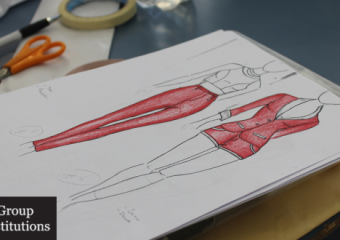The EB5 investment visa program was launched in the year 1990 by the US Citizenship and Immigration Service (USCIS) to encourage economic growth and job creation in the United States. Gradually, this immigrant investor visa program evolved into becoming the most potent tool for foreign investors and their families to gain US citizenship through investment and job creation routes.
Today, there are two types of investment opportunities under the EB5 visa program for a foreign investor:
- Direct investment
- Investment through the EB5 regional center
In principle, both the investment opportunities are similar — the foreign investor has to put money in a US business and create ten full-time jobs for the US workforce. But in practice, they are very different from each other. So, let us check out the key differences between the two immigrant investment visa opportunities.
Direct investment
Few foreign investors seek the direct capital investment route to get the EB5 investment visa. As per the law, in the direct investment route, the foreign investor has to make a direct capital investment in a US commercial enterprise or business in the USA, either alone or along with other investors. This investment should lead to the direct creation of a minimum of ten new full-time employment for the US workforce for two years. The US commercial business could be a partnership, joint venture, limited liability company or sole proprietorship. To qualify for the EB5 visa, the foreign investor has to make a minimum capital investment of $1.8 million in a US commercial business or $900,000 if the business is based in a Targeted Employment Area (TEA).
Investment through USCIS regional center
Most of the foreign investors seeking citizenship in the US opt for the USCIS regional center investment route. Here, the investor has to fund projects or businesses supported by the USCIS approved EB5 regional centers, which can result in the creation of ten direct, indirect or induced jobs. As in the case of the direct investment route, the ten full-time employment positions should last for two years.
The main reason why most foreign investors choose the EB5 Regional Center route is because of their preferred employment calculation method. In this program, usually, more jobs are available per foreign investor, which lessens the risk of disqualification for the investors.
Even in this case, the foreign investor has to invest $ 1.8 million in a US business or invest $900,000 in a TEA. But the investment has to be done through the EB5 regional centers.
Regional center vs. direct investment
Most EB5 business investors who plan to establish and run their US-based commercial business favor the direct capital investment route. They wish to build a successful business, and hence, want full control of their capital investment. The main aim of these investors is to expand their business in the US and ensure profitable business growth.
Foreign investors who seek citizenship in the US prefer the USCIS regional center program. This is because it allows passive ownership of a commercial business with no or minimal day-to-day management responsibilities while satisfying the minimum requirements of the EB5 visa program. In the regional center method, many investors pool in together to make a capital investment in a commercial business. As the investment capital forms a small portion of the total cost of the project, the pooled approach creates a larger job cushion for the investors, generating more than ten full-time US employment per investor. This reduces the compliance stress on the EB5 investor, unlike the direct investment route, where the investor is directly responsible for the creation of ten full-time US jobs.
The filing process
Another difference between the regional center investment and direct investment is the process of submitting the EB5 investor immigration applications.
With direct investments, the foreign investor has to furnish the documents and submit the application in person through a knowledgeable EB5 visa attorney. They are personally responsible for meeting all the required conditions and providing proofs and all supporting documents about their investment and job creation.
With regional center investments, the investor has to coordinate with the certified regional center to furnish the necessary documents about their investment. Here, the investors don’t have to worry about preparing any project-specific documents, as they are already put together and created by the certified regional center.
The EB5 investment visa process requires careful consideration and meticulous paperwork to prove that your case is the strongest and the most genuine among the lot. Thus, you must seek assistance from the right immigration attorney or a certified regional center to create a successful EB5 visa application. If you are looking for an experienced EB5 visa attorney to start your business in the USA,
visit us at https://usimmigrationadvisor.com.









